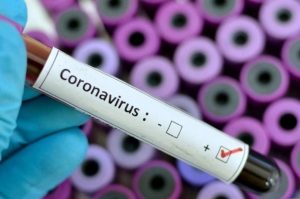West Bengal COVID-19 Cases June 2025: West Bengal has witnessed a steady rise in COVID-19 cases in June 2025, sparking renewed discussions around public health preparedness, government policy, and public cooperation. As of June 9, the state reported 54 new cases, bringing the active caseload to 747, the third-highest in the country. While the numbers are still relatively modest compared to the peak pandemic phases of 2020–21, health authorities and the state government have issued urgent advisories to ensure the situation remains under control.
Chief Minister Mamata Banerjee has appealed to residents not to panic and assured that the state is fully equipped to handle any medical emergency. The government has already initiated preventive measures, ramped up testing, and reviewed preparedness across all districts.
This article provides a comprehensive overview of the latest developments, official responses, healthcare readiness, and what residents of West Bengal should expect in the coming days.

COVID-19 Situation in West Bengal: An Overview
Current Statistics
As of June 9, 2025:
- New cases reported: 54
- Total active cases: 747
- Recoveries so far this month: Over 400
- Deaths in June: One, linked to comorbidities
In comparison to the previous week, the number of active cases has seen a gradual increase, indicating the beginning of a possible localized wave. However, medical professionals have confirmed that the new infections are largely mild in nature, requiring minimal hospitalization.
State Comparison
West Bengal currently holds the third-highest active case count in India, following Kerala and Gujarat. Despite the rise, the overall positivity rate remains under 5%, signaling a relatively contained situation. Kolkata, Howrah, and North 24 Parganas have reported the highest number of cases within the state.
Government Response: Mamata
Banerjee’s Assurance
Public Message from the Chief Minister

Chief Minister Mamata Banerjee has taken a proactive approach in addressing the public and media. In a press briefing at Nabanna, she stated:
“We must remain vig
ilant, not fearful. There is no cause for panic. We have adequate arrangements in all government hospitals, from beds to oxygen supplies. Citizens must trust the public health system.”
Her message emphasized three key themes:
- No panic: The government views the rise in cases as a temporary surge.
- Public health confidence: Facilities are well-stocked and staffed.
- Personal caution: Elderly citizens and those with comorbidities should take extra precautions.
High-Level Meetings
A series of high-level meetings have been held involving:
- Health Secretary
- Chief Secretary
- Director of Medical Education
- Public Health Engineers
- Disaster Management Officials
These meetings focused on oxygen management, readiness of ICUs, availability of medicines, and home isolation guidelines for asymptomatic cases.
West Bengal COVID-19 Cases June 2025: Healthcare System Preparedness
Hospital Capacity
Government hospitals across West Bengal have been put on alert. Measures taken include:
- Activation of COVID wards in major district hospitals
- Deployment of rapid response teams in municipal areas
- Monitoring of oxygen usage and storage
- Reallocation of hospital staff to emergency COVID duty
Private hospitals have also been directed to keep a portion of their ICU beds reserved for COVID-19 patients, should there be a sharp rise in numbers.
Medicine and Equipment Availability
The state has ensured availability of:
- Paracetamol and antivirals
- Oxygen concentrators and cylinders
- PPE kits and N95 masks
- Nebulizers and steamers for mild cases
Special instructions have been issued for pediatric units, as a few recent cases included children. Dedicated pediatric COVID beds are being arranged in Kolkata and other urban centers.
Testing, Tracing, and Surveillance
Testing Ramped Up
Testing numbers have significantly increased since the first week of June. On average:
- 6,000–7,500 tests per day are being conducted
- RT-PCR testing remains the gold standard for symptomatic cases
- Rapid antigen kits are used in field surveillance and rural areas
Testing facilities at airports and railway stations have also been reviewed, especially for incoming travelers from states with higher caseloads.
Tracing and Containment
Contact tracing teams have been mobilized across all districts. If two or more cases are found in a specific zone, micro-containment measures are being put in place. Infections linked to schools, housing societies, or market areas are being tracked with support from local authorities.
The state has issued a directive mandating that private healthcare facilities report daily case numbers to the district health offices to avoid data discrepancies.
Public Guidelines and Safety Recommendations
The government has urged citizens to follow these key protocols:
- Mask Wearing: Masks are advised in crowded public spaces, transport, and healthcare centers.
- Social Distancing: Avoid unnecessary gatherings, especially in indoor spaces.
- Home Quarantine: Those testing positive but showing mild symptoms are advised home isolation.
- Workplace Readiness: Offices are advised to revisit their sanitization and work-from-home policies for symptomatic employees.
- School Safety: Institutions have been told to maintain hygiene standards and notify authorities of absenteeism linked to flu-like symptoms.
Variant Watch: What’s Spreading?
Epidemiologists in the state have confirmed the circulation of new sub-variants of Omicron, such as NB.1.8.1 and XFG. These sub-variants are known for:
- Higher transmissibility
- Mild respiratory symptoms
- Low hospitalization rate
There is no confirmation yet of any variant of concern that is significantly immune-evasive or more lethal. The virology department at the School of Tropical Medicine, Kolkata, continues to sequence samples from across the state.
Expert Opinions from Public Health Specialists
Dr. Arindam Bose, Public Health Advisor to the West Bengal Government:
“The current wave is manageable with basic vigilance. People with pre-existing respiratory conditions should monitor symptoms closely.”
Dr. Sumita Ghosh, a senior virologist:
“We are seeing variants that are better at spreading, but they are not causing a rise in ICU admissions. Vaccination and early treatment continue to work well.”
Dr. Sandeep Barman, head of pediatric medicine at a state hospital:
“We had two children admitted last week with high fever and fatigue, but they recovered fully within four days. There is no cause for alarm among parents.”
Economic and Social Impact
Daily Life Continues
Markets, offices, and public transport remain fully functional. No curfews or lockdowns have been introduced. Schools have been advised to remain open with strict hygiene protocols.
Tourism and Travel
Darjeeling, Digha, and Santiniketan remain open to tourists, though district authorities have issued local advisories asking tourists to avoid traveling if symptomatic. Hotels have resumed temperature checks and hand sanitizer use.
Vaccination Push
The government has launched a special vaccination drive for booster doses. Senior citizens, healthcare workers, and immunocompromised individuals are being prioritized.
Public Sentiment: Calm Yet Watchful
The public response to the new wave has been largely measured. Social media is filled with tips on immunity, home remedies, and vaccination reminders. Rumor control cells at the district level are actively debunking misinformation.
Local NGOs have stepped up efforts to distribute masks, especially in low-income neighborhoods. Awareness drives in schools and panchayat areas are underway.
State-Wide Preparedness Review
Each district has been asked to submit:
- COVID bed availability report
- Oxygen audit report
- Staff readiness checklist
- Community health worker deployment updates
Mock drills are being conducted at government hospitals to test response time and emergency capacity. The Disaster Management Department is also on standby.
Looking Ahead: Is a Wave Coming?
Experts believe the surge in cases is likely to plateau by the third or fourth week of June. However, a significant wave is unlikely due to:
- High immunity from previous infections
- Booster coverage
- Milder nature of circulating variants
The government is expected to continue monitoring the data daily and will escalate containment only if hospitalization rates increase beyond 5%.
Conclusion
West Bengal’s recent rise in COVID-19 cases is a reminder that the virus continues to evolve, but not necessarily in a more dangerous form. The government has shown clarity in its response: no panic, only preparedness. With hospitals ready, testing ramped up, and public health teams alert, the state appears well-positioned to manage the current situation.
Citizens are advised to cooperate, take boosters if eligible, avoid panic-buying of medicines, and maintain personal hygiene. The next two weeks will be crucial in determining whether this is just a brief spike or a longer trend. Either way, vigilance, not fear, is the state’s guiding mantra.
Do Follow links:
-
https://www.wbhealth.gov.in – Official West Bengal Health Portal
-
https://www.mohfw.gov.in – Ministry of Health and Family Welfare, Government of India
-
https://www.cowin.gov.in – CoWIN Vaccination Portal
-
https://aarogyasetu.gov.in – Aarogya Setu App Website
Also read: Home | Channel 6 Network – Latest News, Breaking Updates: Politics, Business, Tech & More

